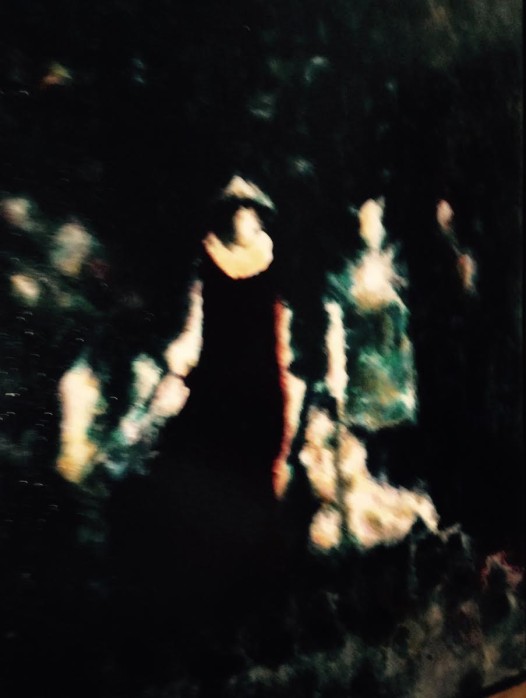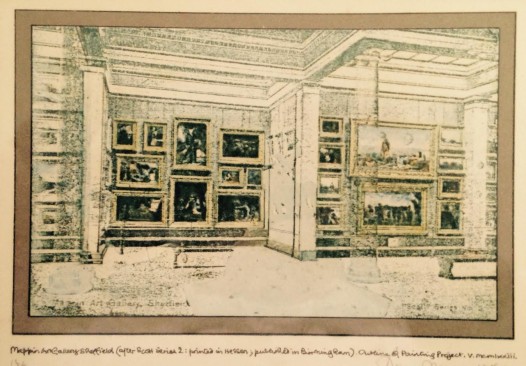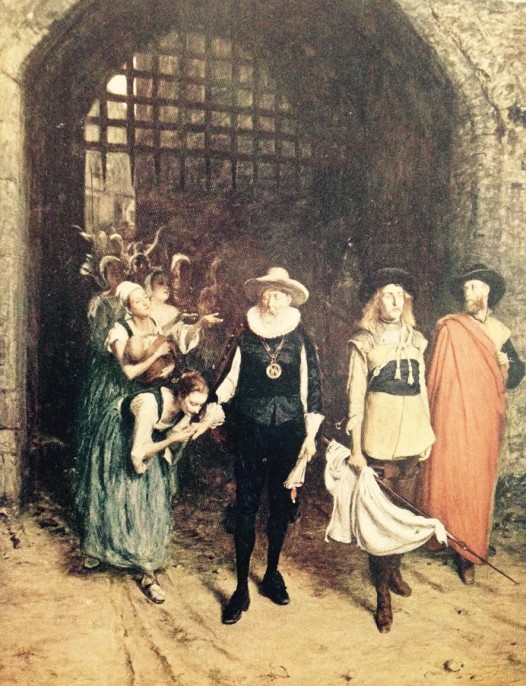
The Flag of Truce, by Tom Phillips
“Is that the king of the Mardi Gras?” a recent overnight guest at Madewood asked, as she raised her snifter of brandy and gestured toward the substantial, 5-by-4-foot painting that dominates the parlor.
British artist Tom Phillips’s striking re-creation of a late-19th-century genre painting has evoked multiple expressions of confusion, angst and admiration from family, friends and guests at Madewood ever since it arrived on the bayou in 1972, shortly after it was painted.
My wife, Millie, a great fan of the Rorschach test, sees a woman sitting in a long dress on the ground, having a picnic under a sprawling oak tree. I love it because, in its out-of-focus, abstract style, it looks like a Victorian painting badly in need of restoration, the perfect accessory for a Southern plantation drawing room.
In the 1970s, Phillips’s star was just rising in the artistic pantheon of the British Isles, and I was fascinated with his work. Joan Crossley-Holland, a double-barreled aesthete who presided over the prestigious Oxford Gallery in the university town in which I was studying, claimed unequivocally, “He is reinventing British painting in the most refined and inventive manner possible. You should have some of his work.”
Thinking internationally, I’d almost raided a bank account at ICB (International City Bank) in New Orleans — which featured both a Rex and a Comus on its board of directors — to buy a tiny cottage to anchor an art community in the nearby village of Woodstock. However, the funds remained safe and sound at the corner of St. Charles and Union streets, ready to be raided to acquire a work by this artist who was becoming both an artistic and a media celebrity.
So off I trotted to his one-man show at the Marlborough Gallery in London, where I was smitten with both the deft artistry and the cleverly Oxbridgian humor of his creations.
Amid clinking glasses and elevated chatter at the opening night of Phillips’s Marlborough exhibition, I fell under the artist’s spell, even though he himself was not there. Fortunately, when my manic moments occur these days, I’m usually in a Dollar Tree store, rather than at a Mercedes-Benz dealership; but, this time, I was among high rollers and had to act quickly.
“I’ll have The Flower Before the Bench — a 20-painting series linked to a major Phillips work in London’s Tate Gallery — I told Graham Leader, a young gallery associate. And the big color- hart painting. The little Humument studies . . . .
Leader sensed an opening.
“There’s a spectacular piece from the Mappin Art Gallery series — the centerpiece, called The Flag of Truce. It’s already packed up and on its way to Neiman-Marcus in Dallas for its ‘British Week’. It’s gorgeous,” he assured me. “You should have it.”

Lithograph of Mappin Art Gallery exhibition, with original Flag of Truce at bottom center
The rest is history. For spring vacation, I booked an airline ticket home with a stopover in Dallas, just in time for the luxury store’s opening gala. There the painting was, calling to me from under the spotlights. Leader was right: It was gorgeous.
And mysterious. Phillips combined abstraction and conceptual art dictates in this painting, based on a hand-tinted postcard he’d found in Germany of a long-forgotten exhibition in the Mappin Art Gallery in Sheffield, England in 1901. Using a magnifying glass, he’d repainted each of the paintings from the postcard, reproducing its diminutive, blurred-and-hand-tinted images on canvases the same sizes as the original paintings.

The Flag of Truce, by Sir John Petty, c. 1901
Years later, I discovered a book chronicling the paintings of the original artist, Sir John Petty — and there it was — The Flag of Truce, in all its Victorian clarity of detail.
On a table near the Phillips painting, the artist’s small lithograph of the hand-tinted postcard and the book of Petty’s works illuminate the mysteries of the canvas that has confused and amused so many Madewood visitors.
But unless they ask, I’m happy to let them think that, yes, that’s the king of the Mardi Gras.
 NOLAbeings Multimedia artist Claire Bangser created NOLAbeings as a portrait-based story project that marries...
NOLAbeings Multimedia artist Claire Bangser created NOLAbeings as a portrait-based story project that marries...  Voodoo in New Orleans: Reviving history: New Orleans fortune telling This article takes a deep dive into the history of Voodoo in New Orleans, its hybridization with Catholicism, and its present-day place in the city's culture. The author visits fortune-tellers in the French Quarter, using their guidance as a tool for introspection rather than a deterministic predictor of the future. Through her experiences in New Orleans, the author feels a mystical connection to both the past and the future.
Voodoo in New Orleans: Reviving history: New Orleans fortune telling This article takes a deep dive into the history of Voodoo in New Orleans, its hybridization with Catholicism, and its present-day place in the city's culture. The author visits fortune-tellers in the French Quarter, using their guidance as a tool for introspection rather than a deterministic predictor of the future. Through her experiences in New Orleans, the author feels a mystical connection to both the past and the future. 
Keith is there an email address I can reach you at?